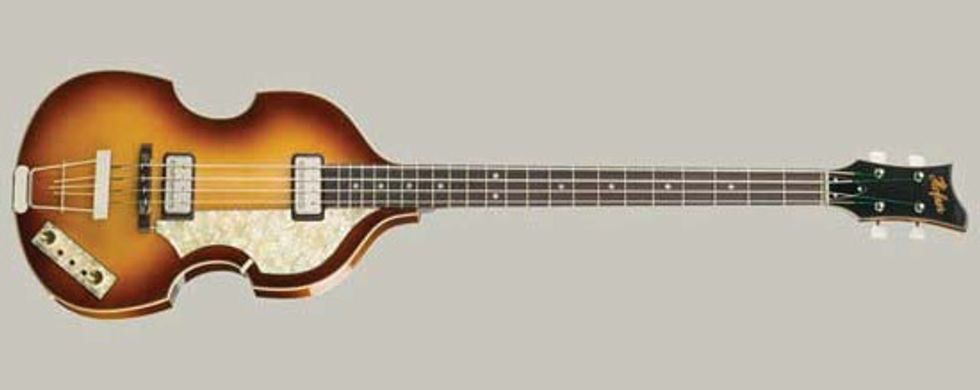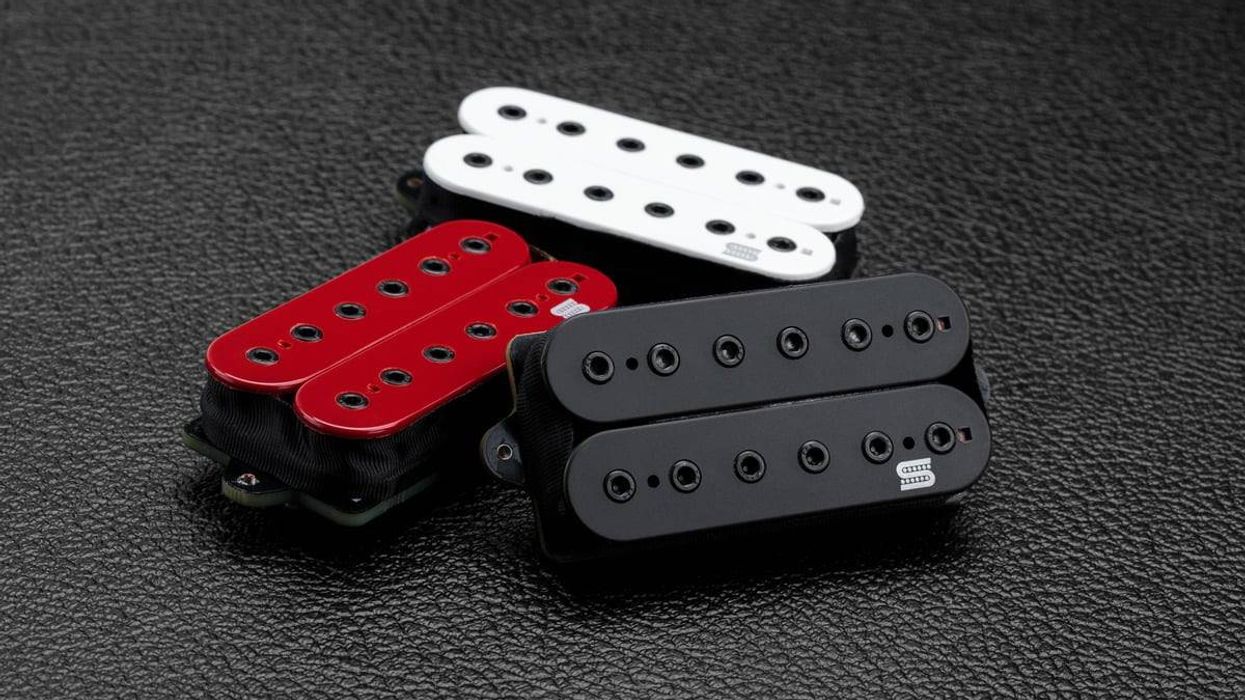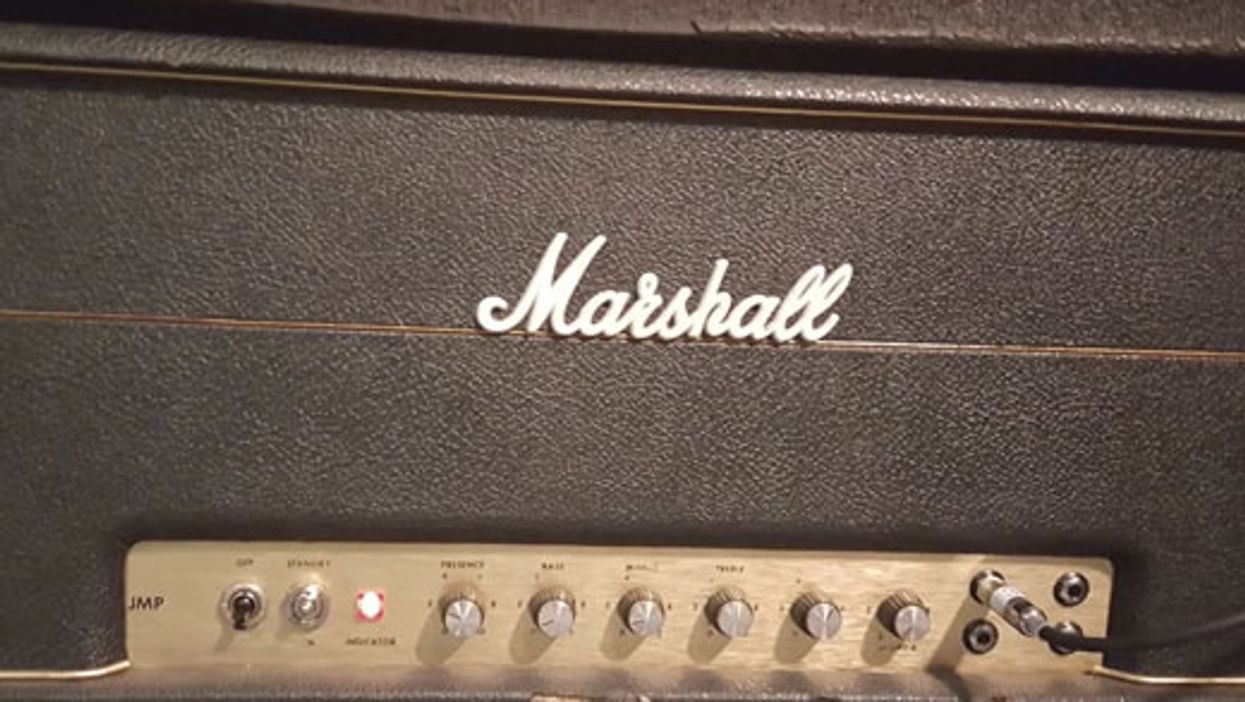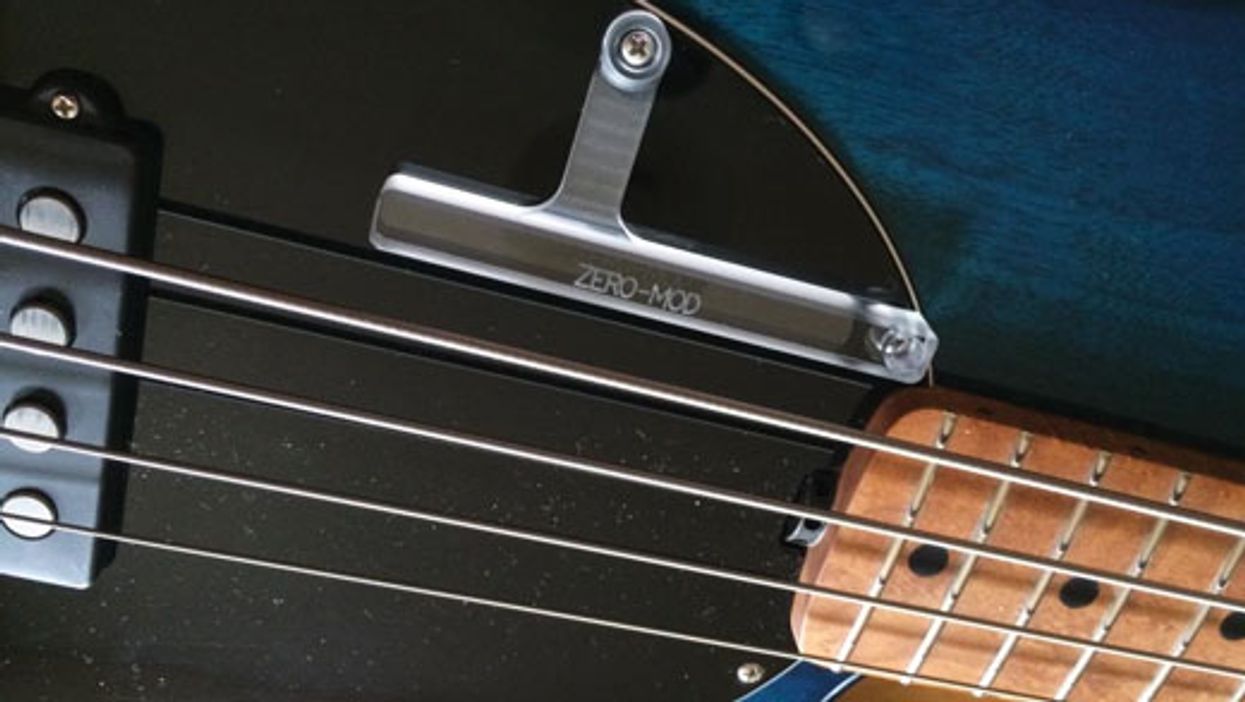
When taking a bass for a test drive, you’ll get the most out of the instrument if you play it in an appropriate musical context. For example, this German-made Höfner 500/1 Vintage ’62—best known as Paul McCartney’s 4-string in the Fab Four days—has a rich low end that also made it a fave of the great reggae bassist, Robbie Shakespeare. A “Beatle bass” sounds sweet strung with flatwounds, but you wouldn’t want to use it for slapping. On the other hand, the Music Man StingRay has long been a favorite of funkateers since its debut in 1976. The Sting- Ray’s onboard preamp— which was radical for its time—allows the bass to cut through a raucous band or horn-driven ensemble. Photo courtesy of Höfner
When G.A.S. gets the best of you—or maybe you actually need a new piece of gear—how can you ensure that what you’re hunting will become a keeper? The answer: Try it out the way it will actually be used.
Before you start looking, though, you have two important tasks. First, know what you’re after. Somebody once asked me if a bass I’d reviewed would sound “better” than his current axe. The way I look at it, any new piece of gear simply plays and feels different from what you have now— there’s rarely a real “better.” Your goal is to decide if the new piece takes you closer to your own functional and tonal nirvana.
The second task is to educate yourself. Read manufacturers’ websites. Spend time on discussion boards. Read Premier Guitar reviews. Learn what an amp’s controls are designed to do. Learn setup specs so you won’t confuse an instrument’s actual playability with the quality of its setup. Armed with this information, trying out new equipment boils down to four considerations:
Play it in the right place.
You buy gear at either a store or online, and neither is a good way to hear what something will sound like. Go into the amp room of a busy shop, and you’re immediately competing with players showing off how much distortion they can get out of a guitar amp or how many notes they can slap.
I’ve found that with an ongoing business relationship, a shop will let you take a bass, pedal, cab, or amp home and spend some quality time with it. Take it to your rehearsal space too. Long ago, I swore I would not buy any new gear without this kind of testing.
For a bass, see how it sits in your band’s mix. If you’re looking at an amp or cab, it’s crucial to test the EQ capabilities. Many rigs have a signature sound—warm, zingy, midrangy, punchy—that works in some settings or with certain instruments, but not others. Most of the time, when I don’t bring home a piece of gear to try out, it soon gets sold off.
Play it with the right gear.
It’s tough to test out something new when everything else in the signal chain is new as well. To get a feel for new gear, try to hold everything else constant. If you’re trying out a bass, either bring your own amp and cab to the shop, or at least, use a rig in the shop that’s familiar.
Carrying this idea to the extreme, I once was looking for an acoustic bass guitar, but was concerned how it would sound along with the other guy I played with. I rounded up my small-gig amp and my friend (with his guitar, harps, and amp), and we popped into a local guitar shop to put on an impromptu gig. I quickly found that an acoustic bass guitar had too close a tonality to my friend’s flattop and decided to look in other directions.
Play it with the right notes.
I used to go to a small guitar shop with a friendly owner, but every time he picked up a bass, he began to slap away at the thing— even when I stopped by to show him a ’60s Japanese hollowbody bass strung with flatwounds.
In general, unless you play in a funk band and need to slap all night long, this isn’t a good way to test the tonality, New Gear Time BY Dan Berkowitz sustain, or playability of a new bass. If you play blues, test out the bass or amp with some blues lines. If you’re a rocker, go through some of the tunes you actually gig. I can understand a new piece of gear best by setting up everything neutrally—no radical tone or EQ settings—and then listening to long notes up and down the neck.
You can learn a lot using this method. One bass I tried out sounded quite bright with the passive tone control fully open, while another had a big sonic hole in its midrange. Both axes would need a fair amount of EQ to match the sound I was after.
Play it with your usual suspects.
Trying out a new bass or amp with your bandmates is an important test too. I remember bringing a potential bass to practice with my blues band. “Sounds funky, but certainly not right for the blues,” I was quickly told. Likewise, I learned that a potential cab was mid-shy enough that the other musicians couldn’t distinguish the pitches once we all began playing. Put simply, if that piece of gear doesn’t do the job for the band’s overall sound, don’t get it.
In all, be sure to give potential new gear a realistic test. Avoid a quick romance that soon turns sour and leaves you with buyer’s remorse. And be sure you know what you’re after with your hard-earned money.
 Dan Berkowitz
is a professor by day and
a bassist when the sun
goes down. He plays
upright and electric bass
for blues, jazz, orchestra,
and musical theater.
Contact him at profdanb@gmail.com.
Dan Berkowitz
is a professor by day and
a bassist when the sun
goes down. He plays
upright and electric bass
for blues, jazz, orchestra,
and musical theater.
Contact him at profdanb@gmail.com.













